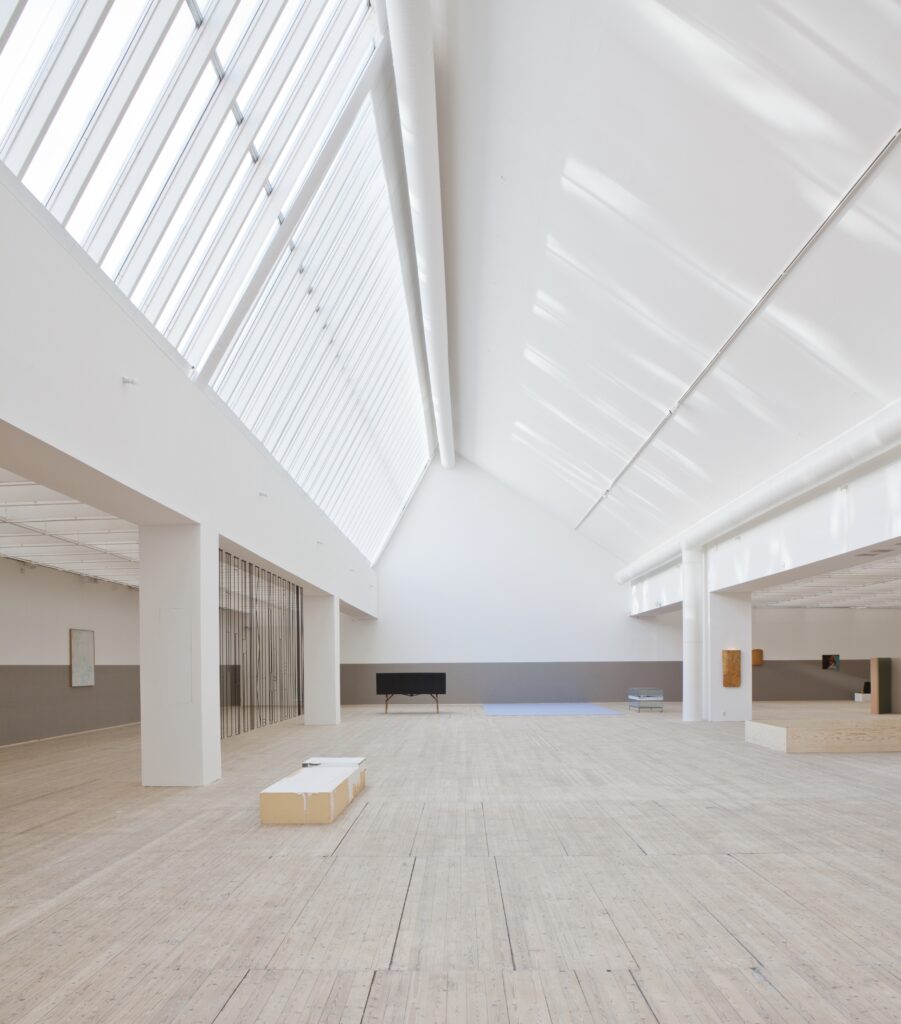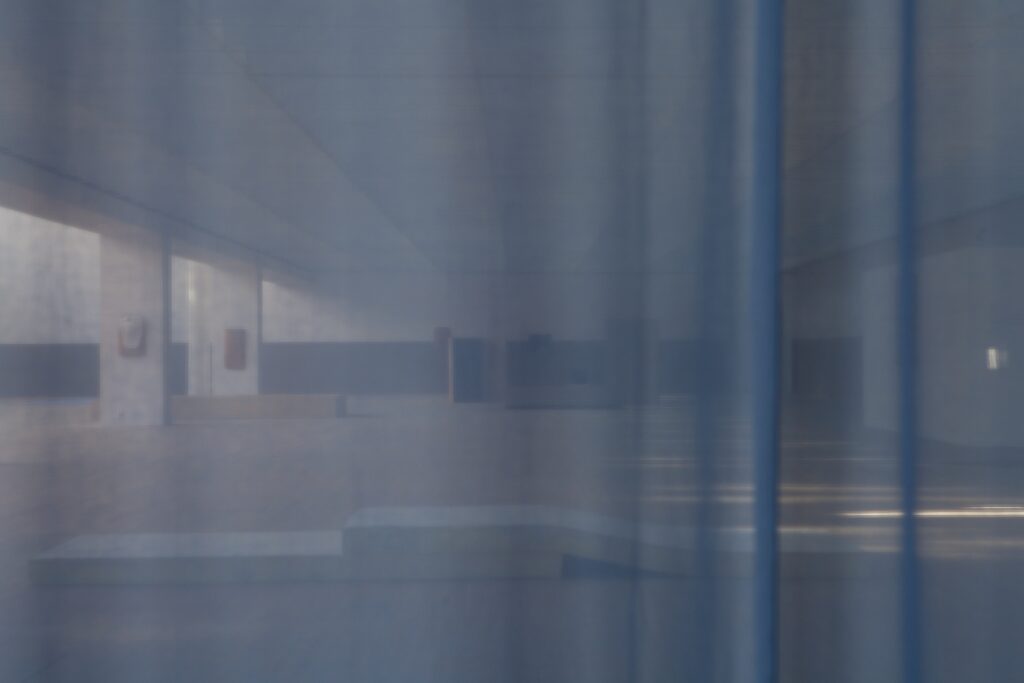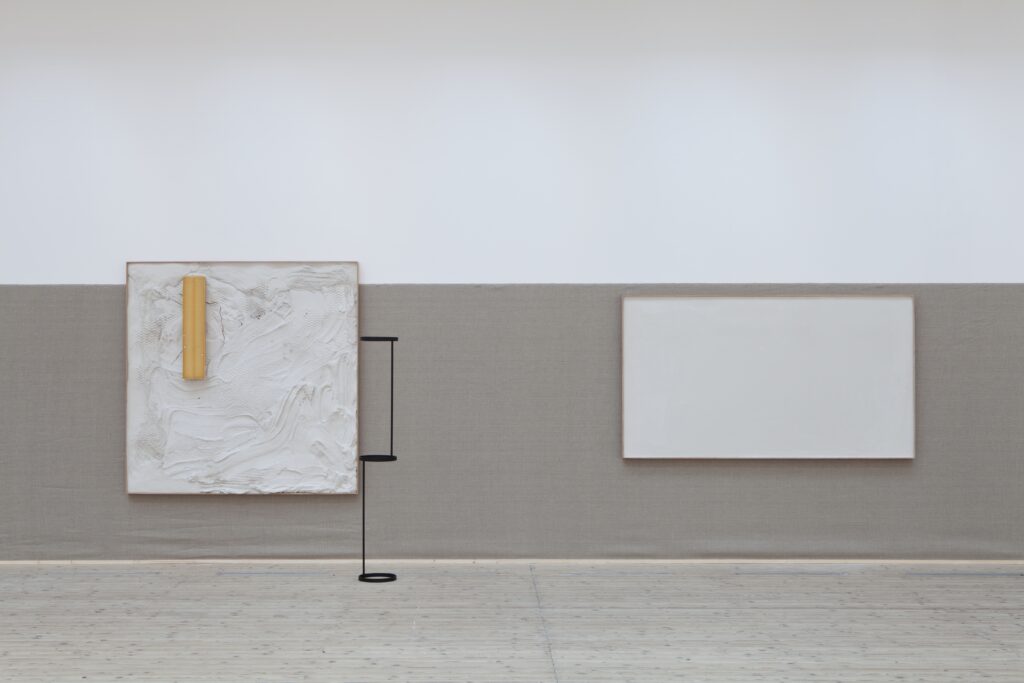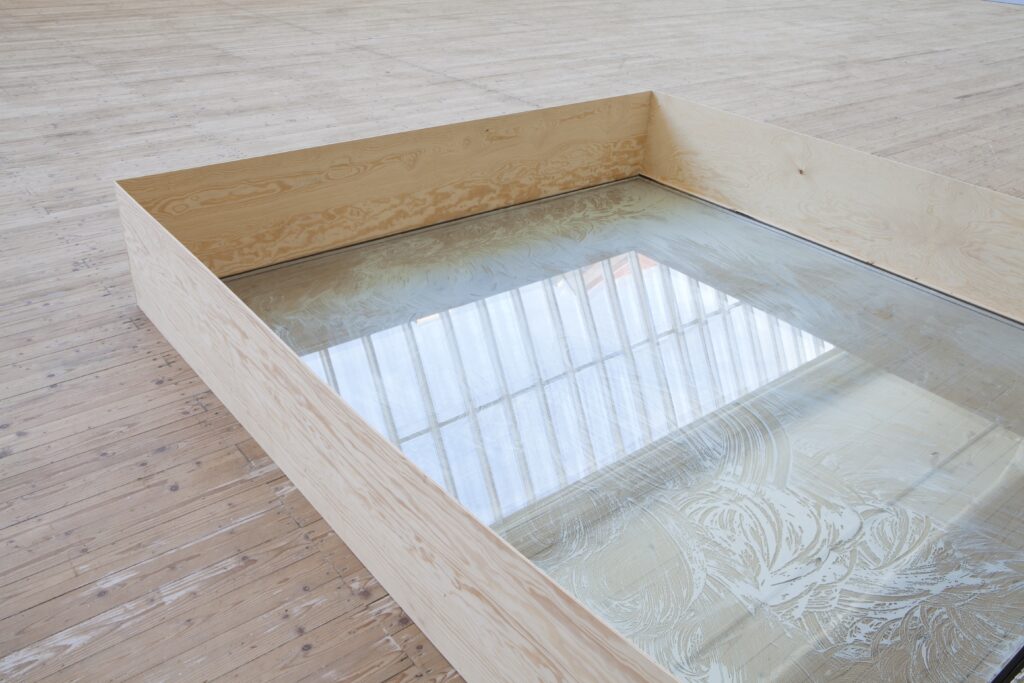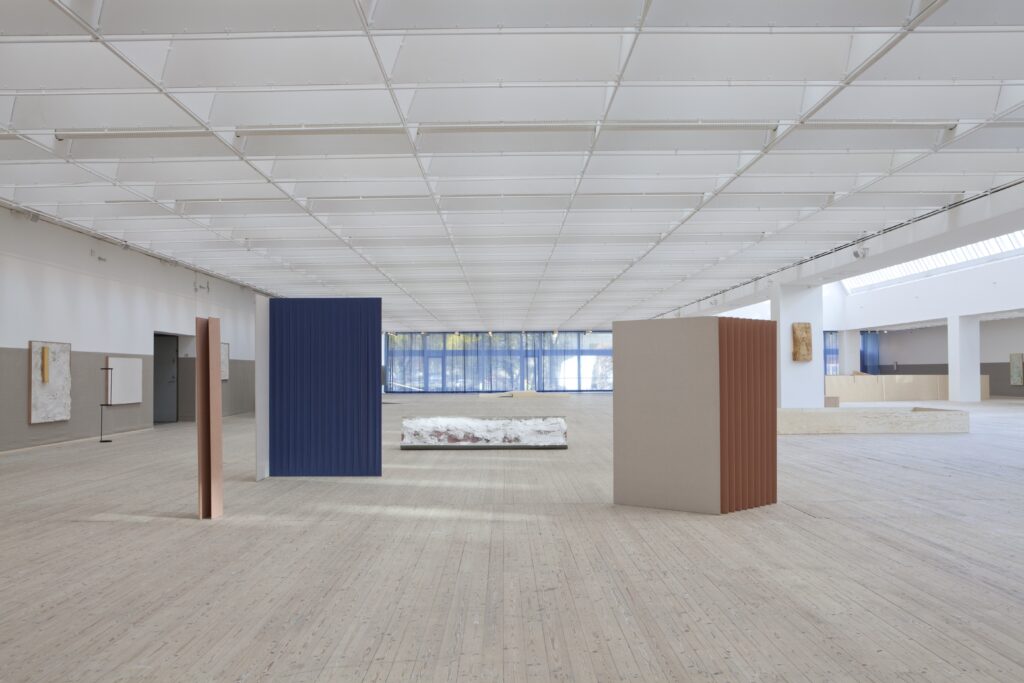
Thea Djordjadze
10.11 2012 – 27.1 2013
In the exhibition Our full, site-specific works by the Berlin-based artist Thea Djordjadze were presented, whose practice is characterized by a sensitivity to the architecture of the space. Although many of the objects are created in her studio, the works take their final shape in the exhibition room. She often works until the very last moment—a way of keeping the relationship between object and space open for as long as possible. In her work, the result becomes a form of mutual transformation, where the art adapts to the space and the space to the art—an organism of things and the traces they leave behind. A movement that leads to the next.
Djordjadze creates sculptures, organisms, and indeterminate landscapes—traces and craters of modernism, imprints of something out of time. Her sculptures reflect both ancient landscapes from nomadic cultures and the cornerstones of 20th-century avant-garde architecture and art. For her sculptures and installations, Djordjadze uses clay and plaster, which she models and sometimes paints. These are combined with materials such as canvas, metal, foam rubber, textiles, carpets, pigment, papier-mâché, and wood. The soft, handmade objects are continuously met by sharp edges of metal and wood in her sculptures and installations. The exhibition at Malmö Konsthall also included paintings, recently rediscovered, that she had created nineteen years earlier.
Djordjadze uses “support elements” in her sculptures; they provide support, serve as a base for something else, but are often just as sculpturally significant as what they are meant to support. The support becomes sculpture, and the sculpture becomes support. They uphold one another, merge, and grow together. But the support elements also introduce a sense of instability—if the support is removed, everything collapses. The works can therefore appear fragile, with a built-in vulnerability, almost as if they are meant to fall apart in order to change over time and become something new.
After its presentation at Malmö Konsthall, the exhibition traveled to Kunstverein Lingen Kunsthalle in Germany and Mudam Luxembourg. Although the exhibitions largely featured the same works, each presentation took on a unique form—in line with Djordjadze’s working methods and her way of engaging with space. At each location, she adapted the works to the existing architecture, giving them a new form and aura.
Thea Djordjadze (born 1971 in Tbilisi, Georgia) lives and works in Berlin. She studied at the Academy of Arts in Tbilisi from 1988 to 1993. Due to the civil war, the school was closed in 1993. Djordjadze left Georgia and moved to Amsterdam to study at the Gerrit Rietveld Academy. A year later, she relocated to Düsseldorf, where she studied at the Kunstakademie Düsseldorf until 2001. Selected solo exhibitions include: The Common Guild, Glasgow (2011), westlondonprojects, London (2009–2010), Kunsthalle Basel (2009), and Kunstverein Nürnberg (2008). Selected group exhibitions include: dOCUMENTA (13), Kassel (2012), Carré d’Art – Musée d’Art Contemporain, Nîmes (2011), SculptureCenter, New York (2011), Hayward Gallery, London (2010), Centre Georges Pompidou, Paris (2010), Barbican, London (2008), the 5th Berlin Biennial for Contemporary Art (BB5) (2008), and the Venice Biennale (2003).
